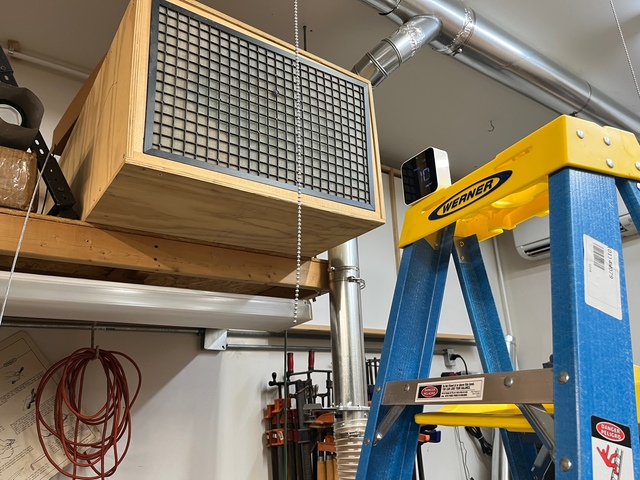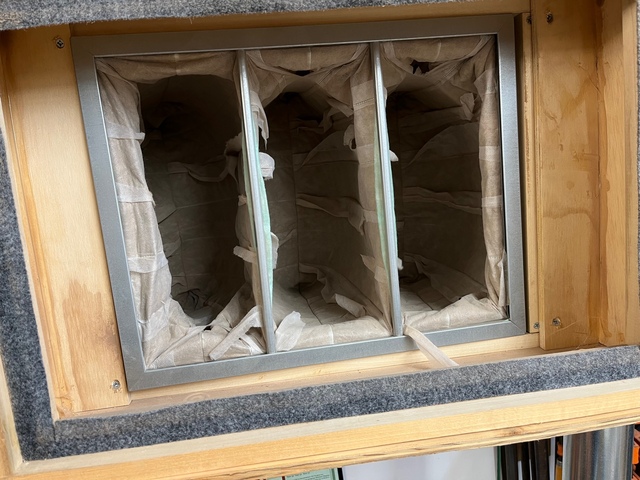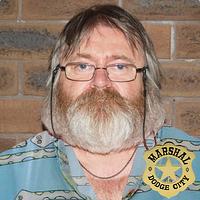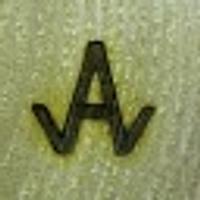
Lazyman
in over 3 years
Corsi-Rosenthal Air Filter Box
Most of the online examples simply make a cardboard cowling to fix this but this was just some testing I did while I waited for the filters I ordered to arrive. I will use a box fan that I already have that has a round cowling that does not have this issue, though I will have to close the gaps between the round cowling and the square filter box.
Update: 01/08/23
I decided to test my Wen Air filter today using the same testing methodology to see if it was worth keeping. Again I stirred up a bunch of dust with the leaf blower and turned on the Wen Filter.
Start
15 minutes later
Not quite as dramatic as the C-R filter box but still pretty good results. I guess the Wen is not quite as wimpy as I thought it was. It does a pretty good job with the PM2.5 levels but took longer to eliminate the PM1 and PM10 levels for some reason. I didn't notice this until later so I may have to repeat the test and monitor it a little longer to see if this happens again and how long it actually takes to get them closer to zero.
--Nathan, TX. Hire the lazy man. He may not do as much work but that's because he will find a better way.
33 Replies
working with my hands is a joy,it gives me a sense of fulfillment,somthing so many seek and so few find.-SAM MALOOF.
Ryan/// ~sigh~ I blew up another bowl. Moke told me "I made the inside bigger than the outside".
What are they actually called and what obviously differentiates a good one from bad... other than exorbitant cost... Any hints a a good reliable one.
If your first cut is too short... Take the second cut from the longer end... LBD
I was thinking more in the lines of a stack of filters, so one could replace one and rotate the others out. At least that was the thought.
Main Street to the Mountains
Also, the cost of the replacement filters for the Rikon is pretty high. I think I’ve got five filters left to “use up” before I retire it for something like what you’re playing with.
May you have the day you deserve!
BTW, one thing that was shown in a couple articles I read indicates that in a 4 or 5 filter setup, even using 1 inch filters, because the multi filter setup doesn't restrict the air flow by much, it will cycle the air through the filters more often so even MERV 11 filters will eventually remove much of the below 5 micron dust from the air. If you can filter the equivalent of the entire volume of air every 5 minutes for example, even a filter that removes lower percentages of particles below say 5 microns will eventually get most of them by just sending the the air through the filter so many times. So with a MERV 11 filters for example, they should remove between 65 and 79% of the 1 to 3 micron particles in each pass. If you can process the entire volume of your shop air 12 times in an hour for example, you can theoretically capture up to 99% (65% ^ 12) of those particles in an hour.

--Nathan, TX. Hire the lazy man. He may not do as much work but that's because he will find a better way.
LIttleBlackDuck
What are they actually called and what obviously differentiates a good one from bad... other than exorbitant cost... Any hints a a good reliable one.
Other than it working as it is supposed to I cannot really say what differentiates a good one from bad. Dylos is one brand that I have seen in the past that was always held up as low end professional quality meter but they are pretty expensive and the reviews seemed kind of mixed to me. I searched for "air quality monitor" to find others. The meter above with the color display is the same model that the guy in the second video above used. He seemed to think it worked well so I ordered that one. It has pretty good reviews.
The other one I found by reading reviews and is made by Temtop who has several other versions including handheld ones. I chose it because it seems to have decent reviews and selected the version that is WiFi enabled so I can look at the history in an app (on iPhone at least). I think that you can also export the data for further analysis but have not tried that yet. Below is a screen shot of the app during the above tests yesterday. The first hump in the graph is the first test where I stirred up some dust and the filter brought the counts down by the time I checked on it 15 minutes later. The second hump is where I stirred up the dust mother load and the graph shows that it gradually dropped for the first 15 minutes. You can see where the PM2.5 count drops dramatically when I switched the air filter back on. This one does not report PM1 or PM10 levels as the other one does.
I believe that Temtop also makes a version that you can download the historical data from. Both of these meters are powered by USB cables and have a battery so that they can operate for a little while without being plugged in. I considered an Amazon branded monitor that is supposedly Alexa enabled but the reviews were sort of meh and it doesn't have a display so you have to rely on Amazon and Alexa to see what is going on. A common complaint is that without an Echo Show you cannot see details.
--Nathan, TX. Hire the lazy man. He may not do as much work but that's because he will find a better way.
--Nathan, TX. Hire the lazy man. He may not do as much work but that's because he will find a better way.
Dave Polaschek
Nice write-up, Nathan! I’ve been getting cranky with my ceiling-mounted Rikon filter. They strongly dis-recommend modifying it to be always on, because (according to the tech support person I talked to) if the filters get clogged, the unit will shut down rather than overheating the motor. But I really want a ceiling-mounted unit I can hardwire to the same circuit as the shop lights so it’s always on when I’m working.
In hindsight, I wish that I had ordered 16x25" filters instead of the the 20x20 ones. That would give it a lower profile hanging from the ceiling with the same surface area but would require a smaller diameter fan. Nice thing about using a box fan or one of the barrel fans the guy in the second video uses is that they would be easy to wire so that they come on with your shop lighting. I may experiment at some point with some sort of manometer to help me see when it is time to replace the filters.
One thing that I do not like about my Wen filter is how loud it is, probably at least partially because it is sending its outbound 200+ CFM through a 6x4" port. This is one reason that I sometimes do not run it or turn it off. It can get a little annoying, especially if I am listening to music while out in the shop. My box fan seems to run quieter. That may also be in part because I have it configured blowing into the filter box which may dampen the sound a few dB. If the noise level of the DIY filters is not as annoying, I may just wire it to come on with the lights as well.
--Nathan, TX. Hire the lazy man. He may not do as much work but that's because he will find a better way.
I started looking into going down this road, for the house, a couple years ago. It started with building a new filter box so I could use three, instead of one. Too, because my house HVAC uses 5" filters, I was going to stay with them.
The design grew from there. It uses allthread and jig knobs to allow me to use thinner filters, or to add screens or cheap glass filters to filter out kids, cats, bricks and what have you. As well, I could, if desired, add a charcoal filter.
Then the design schemes included a portable version, like the ones in this post. It would, like my HVAC, rely on a three or four speed squirrel cage. It would use at least four 5" filters and would scrub a lot more of what we have to dust for out of the air.
My HVAC was set up on a single speed, but I bought a stacked switch, jumpered the input terminals, installed it on the HVAC, then wired it in, to allow me to drop or raise the speed.
Though many may not know it, nearly every furnace or HVAC squirrel cage is capable of three or four speeds.
Another great add to these is, an manometer or a Magnahelic gauge by which the filter condition can be monitored. This is a great help on my home system and my shop dust collectors.
The home HVAC uses a 1" Magnahelic gauge, which taps into the airflow between the filter and the fan. The more clogged the filter(s) become, the higher the gauge reads. By noting the reading when a new filter is added, its condition can be tracked.
NOTE: Merely that two companies sell filters with the same MERV rating does not mean the amount of air they allow to pass will be anywhere near the same.
My 3 horse dust collectors required a Magnahelic gauge with a much higher capability, since it would peg the needle installing it at the intake port.
An alternative to overcoming pegging the needle is, use a valve that allows you do damp down how much air is drawn.
This would be a MUST, if using a manometer on a dust collector, because if would empty the gauge before you could pull back from the install.
--Nathan, TX. Hire the lazy man. He may not do as much work but that's because he will find a better way.
If your first cut is too short... Take the second cut from the longer end... LBD
A hose and liquid would work great too. As I note, you'd have to all but shut off the line. For starters, hot glue and a fine drill bit?
Again, thanks for taking the time to make this report.
CL810
replied 2 days ago
Great report Nathan - Thanks! I used an HVAC blower coupled with a filter I purchased from Grizzly . In your research did you come across anything about using HVAC blowers? I've purchased a particulate meter so I'm going to test the effectiveness of the Grizzly filter.
Again, thanks for taking the time to make this report.
I saw some examples of filter boxes where they used HVAC (squirrel cage) blowers but none that did any sort of analysis about how quickly or well they filtered the air. The closest that I have seen is from YouTuber Jay Bates where he made a cart using HVAC filters and and an HVAC blower. He was happy with the performance. I went back and forth about using an HVAC blower but when I saw the simplicity of the C-R filter approach where you can literally buy everything you need for under $100 at a Home Depot, I decided to finally give this a try. One nice thing about it is that it will be much lighter so will be easier to hang from the ceiling than one that requires a plywood box.
As far as the Grizzly filter is concerned,curious about how its surface area compares to a 4" MERV 13 or 14 HVAC filter. The 4" MERV 13 filters I bought from FilterBuy have about 2800 square inches per filter and I will have at least 4 of them one I make one that I can hang from the ceiling. It would be nice if Grizzly or the other similar brands listed a MERV rating. They just call the inner filter a 1 micron filter but do not say how efficient or effective it is at filtering 1 micron particles. If you look at the MERV chart I posted above, a MERV 11 filter technically filters some 1 micron particles, just not very well. It would be nice to find out what what the Grizzly's MERV rating is. As you can see from my update above, my Wen actually work fairly well and uses a filter that is similar but smaller than the Grizzly one so I would expect your results will be good as well. Let us know what you find with your tests.
--Nathan, TX. Hire the lazy man. He may not do as much work but that's because he will find a better way.
It's always on when I'm working.
There's roosters laying chickens,and chickens laying eggs... John Prine
This summer I built one for a single 24"x24" which used a salvaged 3 speed blower from a dehumidifier. That one has a 6" duct outlet so I can use one of the portable AC vent mounts in the garage door as an exhaust (mostly for a spray painting or soldering fume extraction).
One key I've found is to make sure you're running it before you start making dust and it keeps up much better. I also often run the fan on my furnace to help as well. I hate dust. I have a PSI dual fan ceiling mounted air cleaner too. I think those work more efficiently per CFM because of the air circulation, when properly installed
MosquitoMade.com

It is located on a shelf 8' high in my shop/garage. The first filter you see in the pic above is a washable filter that I do not know the Merv rating for but I'm sure it is very low. The second filter is a Grizzly 1 micron filter for their W1690 air filter system and rated for airflow of around 1,200 cfm. (The reason I say around is on Grizzly's site it is hard to find the same rating twice.)

The surface area is approximately 7,560 square inches or 52.5 sq. ft There are 6 surfaces measuring approximately 6" X14" X 15". The blower is small. I believe it came out of a house about 1,000 sq. ft. in size. A 1.5 Ton HVAC unit (according to Mr. Google) will generate 600 cfm and a 2 Ton unit will generate 800 cfm. Without disassembling the box it is hard to get an accurate measurement, but I estimate the blower is 8"X 8". I have limited Google kung fu powers and could not find anything about how many cfm that size blower would generate.
On to test results.
(Disclaimers: First. there has been virtually no shop activity since my last shop cleanup. I must state that either I'm a better shop cleaner than I ever would have imagined or I'm terrible about stirring up dust. I would go with the latter.)
First I measured the PM 2.5 levels in my undisturbed shop. It was between 1 & 2 as it kept going back and forth. Next I turned on my air filter and used my leaf blower to stir things up. I set the Temtop meter on top of a ladder as you can see in the first pic. The reading was 25. I then moved it to the air outflow side of the blower and positioned it similarly to how it was positioned on the inflow side. The reading was 3. Dust must settle fairly quickly as about 10 minutes after the initial reading the PM 2.5 reading was 10 at the intake side. I re-positioned the meter to the top of my workbench and got the same reading, 10.
So there are my initial results. I hope to study this further when I have some more time.

















